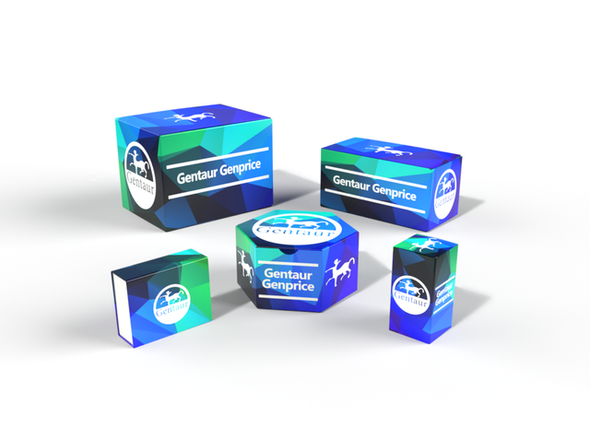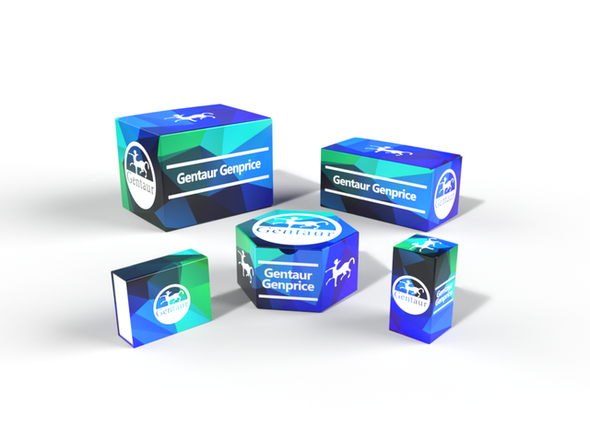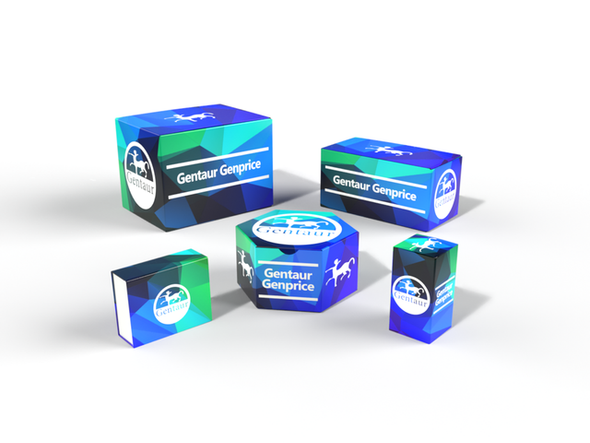Description
Desmoglein 2 Antibody [6D8] | 33-656 | Gentaur UK, US & Europe Distribution
Host: Mouse
Reactivity: Human
Homology: N/A
Immunogen: A recombinant human DSG2 protein was used as the immunogen for the Desmoglein 2 antibody.
Research Area: Cancer, Signal Transduction
Tested Application: Flow, IF, IP, WB
Application: Flow Cytometry: 0.5-1 ug/million cells in 0.1ml
Immunofluorescence: 1-2 ug/ml
WB: 1-2 ug/ml
Immunoprecipitation: suitable
Optimal dilution of the Desmoglein 2 antibody should be determined by the researcher.
Specificiy: N/A
Positive Control 1: N/A
Positive Control 2: N/A
Positive Control 3: N/A
Positive Control 4: N/A
Positive Control 5: N/A
Positive Control 6: N/A
Molecular Weight: N/A
Validation: N/A
Isoform: N/A
Purification: Protein G affinity chromatography
Clonality: Monoclonal
Clone: 6D8
Isotype: IgG1, kappa
Conjugate: Unconjugated
Physical State: Liquid
Buffer: PBS with 0.1 mg/ml BSA and 0.05% sodium azide
Concentration: 0.2 mg/mL
Storage Condition: Aliquot and Store at 2-8˚C. Avoid freez-thaw cycles.
Alternate Name: Desmoglein-2, Cadherin family member 5, HDGC, DSG2, CDHF5
User Note: Optimal dilutions for each application to be determined by the researcher
BACKGROUND: Recognizes a protein of 165kDa, identified as Desmoglein-2 (DSG2) . This monoclonal antibody recognizes the extracellular domain of human desmoglein-2. Desmoglein-2 is a member of the desmosomal cadherin family. Desmosomes are intercellular adhering junctions that represent cell surface attachment sites for intermediate filament. Desmocollins and desmogleins are the main desmosomal transmembrane proteins. Desmogleins consist of Dsg1, Dsg2, Dsg3, and Dsg4 isoforms. Within the desmosome, the extracellular domain of desmoglein is essential for calcium dependent heterophilic binding to the desmocollins, whereas the intracellular domain is essential for binding to the desmosomal plaque protein, plakoglobin. Human Desmoglein-2 is a type I transmembrane glycoprotein of 1117 amino acid (aa) residues with a 23 aa signal peptide and a 25 aa propeptide. It differs from other classic cadherins by having four instead of five cadherin repeat domains in its extracellular region, and a much larger cytoplasmic region containing five desmoglein repeat domains which share homology with the cadherin repeats. Instead of having the HAV adhesion motif found in type I cadherins, desmogleins have R/YAL as the adhesion motif on its amino-terminal cadherin repeat. The cytoplasmic tails of desmogleins interact with desmoplakins, plakoglobin and plakophilins. In turn, these proteins link the desmogleins with the intermediate filaments. Desmoglein-2 has been shown to be important in establishing cell-cell adhesion and function in epithelial cells. Desmoglein2 was originally identified in colon carcinoma and colon, and was named HDGC (human desmoglein colon) .

![Desmoglein 2 Antibody [6D8] Desmoglein 2 Antibody [6D8]](https://cdn11.bigcommerce.com/s-1rdwiq712m/images/stencil/608x608/products/483893/489722/gentaur-genprice__26005.1661610467__29809.1661628092__75433.1661676199__77988.1661684280__64362.1661692443__02085.1662049603__45075.1662119302__91744.1662191540__21580.1662291419__27761.1663498784.png?c=1)
![Desmoglein-2 Antibody [6D8] | MC-213 Desmoglein-2 Antibody [6D8] | MC-213](https://cdn11.bigcommerce.com/s-1rdwiq712m/images/stencil/590x590/products/440921/445750/gentaur-genprice__26005.1661610467__29809.1661628092__75433.1661676199__77988.1661684280__64362.1661692443__02085.1662049603__45075.1662119302__91744.1662191540__21580.1662291419__29822.1663312643.png?c=1)







